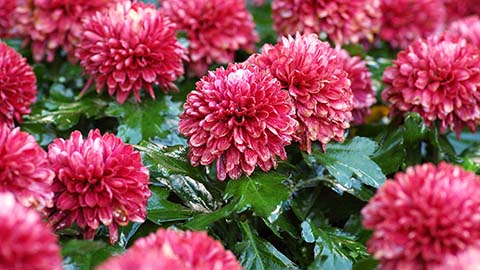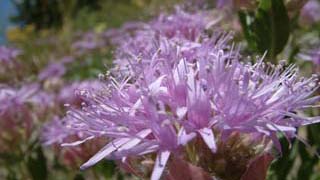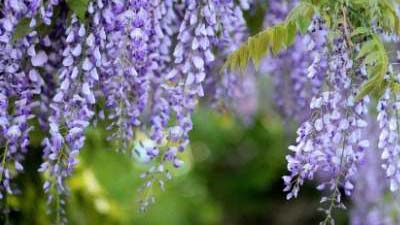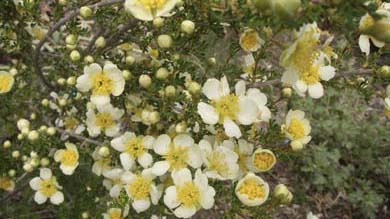How to Grow English Lavender in Your Garden
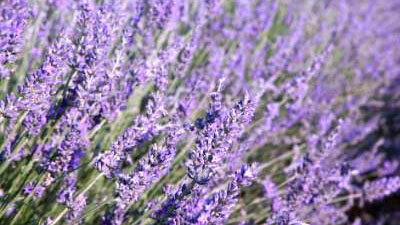
Summary
English Lavender (Lavandula angustifolias) thrives in full sun, well-drained soil with a pH of 6.5-7.5. Grow in full sun. Climates suitable for lavender range from zones 5 to 10 on the USDA hardiness scale. It does not perform well in wet or water-logged soils. Because seed germination is slow, it is commonly propagated from cuttings taken in the summer from side shoots from the mother plant. To start new plants, place cuttings in moist sterile sandy soil, 3 to 4 inches apart in a cold frame with some lath protection. When cuttings are a year old, plant 18 to 24 inches apart into a dry, light, gravelly soil after the last frost has passed in spring. Harvest flowers when they are bright and vivid.
English Lavender Varieties
English Lavender is hardy to zone 5 and is suitable for most growing areas in Utah except the coldest high mountain regions. Recommended varieties are Munstead and Hidcote. Other varieties also include: English, Hidcote Pink, Jean Davis, Sarah, Vera, and Lady. Newer hybrids that outperform the original are Grappenhall, Provence, Grosso, Dutch Mill, Abrialii and Seal. Not all varieties may be available locally. Consult reputable nurseries or specialty garden centers to ensure the availability of desired selection.
How to Grow English Lavender
Soils
English lavender grows best in dry, sandy, well drained soils. Planting in saturated or soggy soil should be avoided.
Soil Preparation
Apply 1 inch of coarse compost and incorporate 4 to 8 inches deep. Adding organic matter to the soil will create better air spaces, improve drainage, and ensure plant establishment.
Plants
Lavender can be grown from seed or cuttings. From seed, the cultivar “Lady” is recommended, especially if grown for herbal qualities. While hardy in zones 5 to 8, it will survive zone 4 winters if mulched or grown in a south facing location.
Plant Propagation
Sow seeds 1/8 inch deep in soilless media and lightly cover seeds with perlite. Keep flats or pots watered, not allowing the seedling to become dry. Seed germination usually begins in 14 to 21 days and seeds sprout best at 70°F with the use of a heating pad. For plants grown permanently in pots, make sure to re-pot every spring into a larger container with fresh potting soil. This ensures the plant will produce more flowers. Use a coarse potting soil with additional organic fertilizer. Most lavender produced commercially is started from cuttings taken from established plants. To reproduce lavender from cuttings, cut a vegetative stem just below a node (leaf joint), remove 3-4 of the lower leaves, dip the cut end in rooting hormone, and set the cuttings in warm (70°F), moist potting soil. Keep moist but not wet. Roots form in 30-40 days, then transplant to a pot and continue to grow out.
Planting and Spacing
Transplant new plants after the last spring frost. Fall planting works if there is 2 months of good weather so plants get established before winter. Lavender grows slowly during the fall and plants not survive the winter without good root development and heavy mulching. Space lavender plants 18-24 inches apart into light, well aerated, gravelly soil. Lavender grows about 1-2 feet tall and wide depending on variety and takes 3 years to reach full size.
Water
In hot regions, irrigation is needed for optimal productivity. Lavender has a rooting depth of 18-24 inches. In general, apply 1 gallon of water per plant per week after transplanting, until plants are established. Mature/established plants need ½ gallon of water every 2 weeks until flower bud formation. During flowering, water one or two times per week through harvest. Lavender is very drought tolerant once established, but grows produces more blooms with regular watering.
Fertilization
Lavender has low nutritional needs. If compost was applied to the soil at planting it should not need supplemental fertilizer during the first year. Over-fertilized plants produce more foliage, but less flowers. Too much fertilizer also makes plants vulnerable to disease and cold weather injury. Compost (1 inch under plants) is enough to feed the plants. One application of a slow release fertilizer (1 T/plant) covers the growing season’s needs.
Pruning
Problems with Growing English Lavender
Weeds
Lavender is not competitive with weeds. Keep weeds controlled during establishment and use landscape fabric as a weed barrier. Light mulches such as bark or gravel help reduce weed establishment.
Disease and Pests
Lavender has few pest or disease problems, but is susceptible to soil diseases such as Phytophtora root rot. Do not overwater or let water stand around the plants. Heavy infestations of grasshoppers can reduce yields, but will not kill mature established plants outright. In some areas, deer may damage the plants by browsing.
How to Harvest and Store English Lavender
Harvesting occurs when the flowers start to open. During the first year, branches should be clipped to keep them from flowering and to encourage the development of lateral shoots. It is best to harvest flowers in the mornings after the dew has evaporated but before the heat sets in. This is so the oil does not dissipate. If harvesting for dried flowers, cut flower stalks when the first two flowers on the spike have opened. Tie the stalks into bunches and hang upside down suspended from rafters in an attic or outside in a shed where it is dark and dust free. Once dry, store the bunches in dark tinted or plastic containers with tight fitting lids, in a cool, dark, dry place. Direct sunlight and air exposure shorten storage life
English Lavender Productivity and Uses
With proper care, lavender plants will survive for 10- 15 years. Lavender should be pruned every year after flowering. Shear back the plants to half its size to stimulate new growth and a bushier vibrant plant. Pruning and shaping will extend longevity and improves productivity. Lavender has a wide variety of uses including use in potpourri, aromatics for shaving creams, colognes, perfumes, vinegars, sedatives, and is reportedly good for oily skin.
Frequently Asked Questions
Q. Is lavender easier to propagate from seed or cuttings?
Most lavender is started from cuttings from the mother plant. Direct seeding is not recommended as the germination rate is low and the time from seeding to transplanting is between 100 and 200 days.
Q. What are some plants that are commonly planted with English Lavender?
English Lavender may be planted with other low water use plants such as Gaillardia, Salvia’s, Echinacea, Day Lilies, Rudbeckia, and Iris.
References
- Kowalchik, Claire, William H. Hylton, and Anna Carr. 1987. Rodale’s illustrated encyclopedia of herbs. Rodale Press, Emmaus, PA.
- Tucker, Arthur O., Thomas DeBaggio, and Francesco DeBaggio. 2009. The encyclopedia of herbs: a comprehensive reference to herbs of flavor and fragrance. Timber Press, Portland, OR.
- McNaughton, Virginia. 2000. Lavender: the grower’s guide. Timber Press, Portland, OR.
Utah State University Extension
Peer-reviewed fact sheet
Download PDF
Authors
Keenen Crummitt and Dan Drost
Related Research


